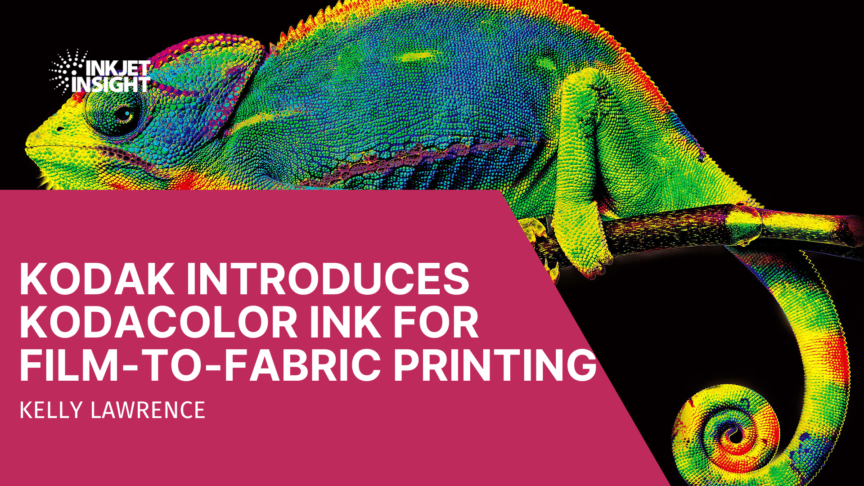The Eastman Kodak Company recently announced the launch of a new ink system for Film-to-Fabric (DTF) printing projects. Read on to learn why garment decorators and commercial printers are rapidly adopting this new print technology and how KODACOLOR helps them grow their businesses.
What Is Film-to-Fabric Printing?
Film-to-Fabric, also known as Direct-to-Film or DTF, is an emerging technology that is seeing rapid adoption, particularly among custom t-shirt decorators and traditional commercial printers looking to expand their business. DTF allows custom t-shirt designs to be printed on special films combining the benefits of digital inkjet and transfer printing. DTF ink systems can be used with most modified inkjet printers and involve three simple components: powder, film, and ink.
The print and application steps are separated in DTF printing. The process is more like producing a screen-printed transfer than a typical direct to shirt screen print. Once the ink is printed on a special film, a special adhesive powder is applied and then heated in an oven. The print can then be transferred to a garment with a heat press and the film is discarded. The ink is pigment based and enables bright colors and patterns for a look similar to screen printing.
Benefits of DTF Printing
The benefits of DTF include the ability to print on a wide variety of fabrics (e.g. natural fabrics, polyester, nylon, rayon, blends, and cotton); less investment in hardware for startup (versus a traditional Direct-to-Fabric / DTG printer); and more flexibility to accept customer printing projects.
The pre-treatment step typically required in DTG printing is eliminated. This means the workflow is more efficient. It also expands the substrates a garment decorator can print on. For example, dark polyester shirts can be printed without dye discoloration that is frequently caused by pretreatments required for DTG printing.
Like DTG printers, DTF printers come with white ink circulation. Users report that the precision is greater in DTF printers so that distortion and unwanted white lines sometimes seen in DTG printing have been virtually eliminated. In DTF printing there are two standard nozzles where one is dedicated to white ink printing and the other is dedicated to CMYK colors. Newer machines may offer additional nozzles for further color separation enabling more florescent and complicated color patterns and designs. DTF printers are also said to handle static better than DTG printers. Dry air can cause printing problems. A good print is reliant on consistent and lasting humidity. From a profitability standpoint, DTF printers offer advantages to small shops that want to maximize profit with the lowest up-front investment or are exceptionally good at delivering small order quantities. The printers themselves are available at a lower cost than traditional DTG equipment. Advocates will argue DTF printers generate less waste than DTG printers. If a design gets messed up, it only affects the small area of film on which it was printed on. The shirt or garment receiving the design is not wasted.
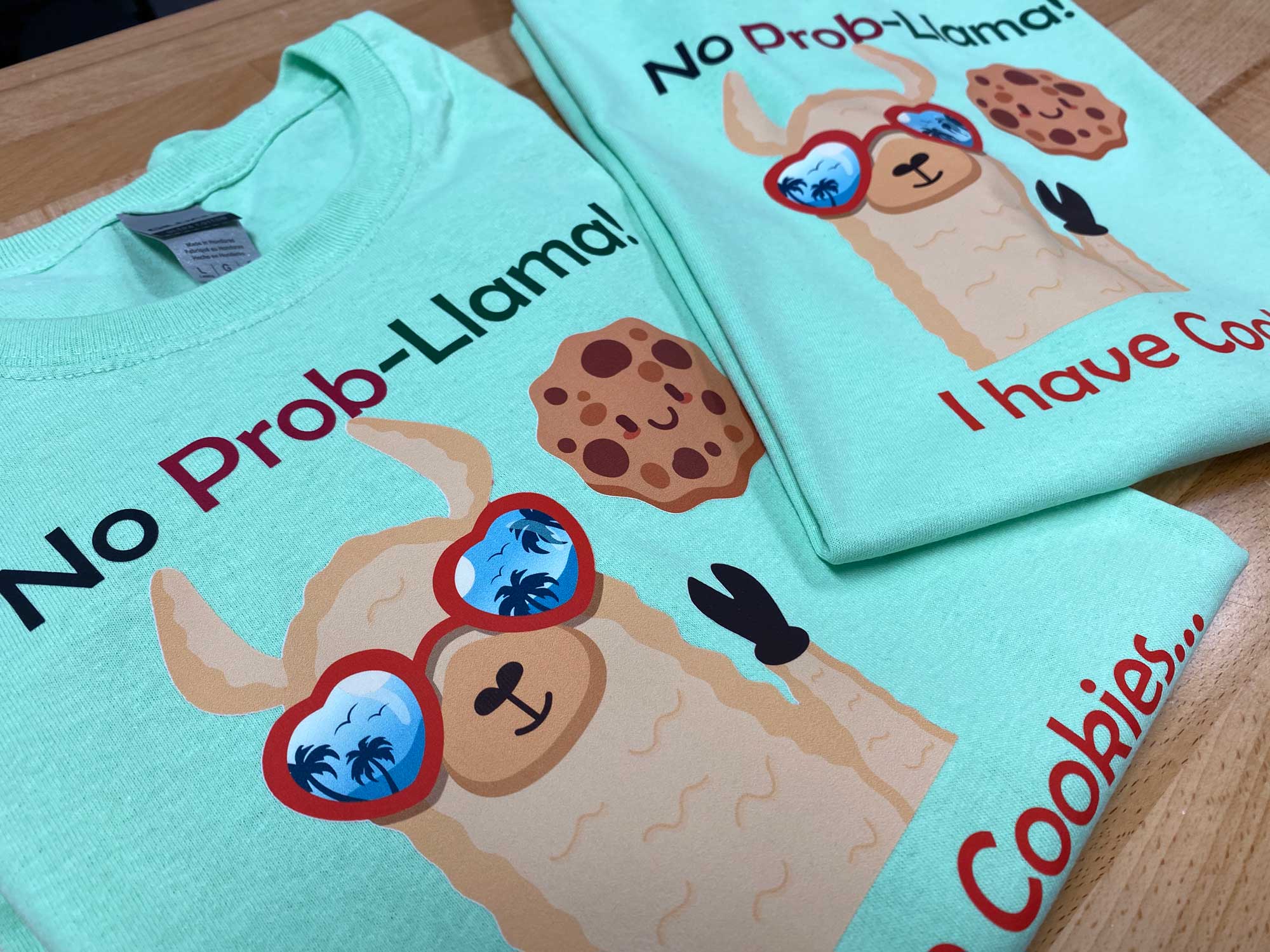
DTF printed Girl Scouts® t-shirt provided by Coldesi as part of a case study
“This is just in time to the nth degree” says Don Copeland, on Custom Apparel Startups Podcast #159 – All About Direct to Film Printers. “Once you get going, it’s eight minutes until the first transfer comes off the roll, then the transfers just keep coming at an incredible volume on that 24” printer. Once you have a printer transfer it’s only :15 to press it onto a shirt. This is an on-demand business and is the right tool for a number of applications, including where DTG struggles to get a good print on a particular substrate, when you need to streamline production of variable sized prints and special placements like tags, etc.”
Benefits of KODACOLOR
Kodak’s DTF ink system includes KODACOLOR powder, KODACOLOR film, and ink specially designed for use in a film-to-fabric application. Inks are available in CMYK and white. Customers with existing Direct-to-Garment (DTG) printers have the option to use KODACOLOR DTG inks with KODACOLOR film and powder to add Kodak’s DTF to their offerings.
For fabric print shop owners wanting high-quality fabric prints without the expense of a full-fledged DTG fabric printing system or wanting to offer additional print projects on fabrics other than cotton to their customers, Kodak’s FTF ink system can deliver a viable solution.
Grant French, Kodak’s DTG and DTF product manager said, “We are pleased to announce the entry of Kodak into this market, giving more customers access to a high-quality, lower cost business option to create amazing, printed fabric projects.”
Kodak has been producing and selling digital inks for thermal piezo and continuous inkjet systems going back to the 1990’s demonstrating our ongoing commitment to the inkjet business. Kodak has a strong history of innovation and excellence in the key technologies needed to produce superior fabric inks and ink systems.
What if I currently print t-shirts using Kodak DTG Printers and Ink?
French notes that current printers of t-shirts may have times when they want to use traditional DTG printing and other times when they want to leverage DTF printing. The great news here is that Kodak designed KODACOLOR branded film and powders to enable current DTG printers to get the best of both worlds.
Traditional DTG printers will want to purchase KODACOLOR branded film and powders that are specifically designed to be compatible with their KODACOLOR DTG ink and DTG printers. A simple change to the software setting on the DTG printer will enable the ink to print in reverse mode. This means the colors print on the film first and then white. Add the powder and the print is ready to be transferred to fabric. Profile adjustments may also be needed to accommodate substrate differences between film and textile. These simple software adjustments enable DTG printers to print DTF without having to invest in new equipment.
What Do I Need to Be Able to Print DTF
Printer Compatibility
KODACOLOR inks for roll fed or cut sheet inkjet printers are compatible with a number of different DTF printers including Mutoh and many Chinese manufacturers. The DTF inks are supplied through partners. These inks contain a label indicating they are provided by an Authorized Distributor of KODACOLOR inks. See below:

Authorized Distributors
Kodak is expanding its distribution network for DTF. Supplies can be sourced from:
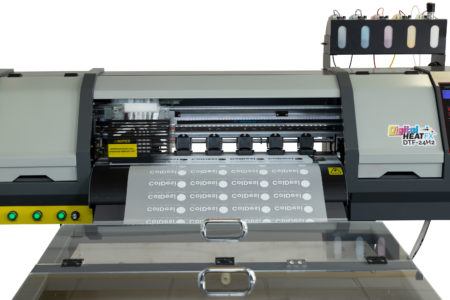
DTF printer. Photo courtesy of Coldesi.
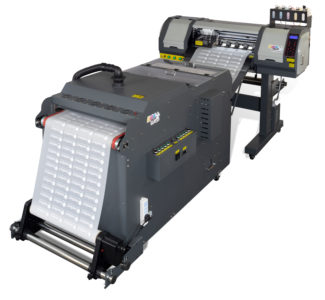
Roll-fed DTF printer. Photo courtesy of Coldesi.
KODACOLOR Powder
Thermoplastic polyurethane (TPU) powders are used to adhere the prints to textiles. The powders also help block out background on colored shirts. For example, if you print on a polyester shirt that has been colored by a dye, the powder helps to prevents resublimation of the dye so the color integrity of the fabric is maintained.
Availability
- White TPU powder
- Black TPU powder
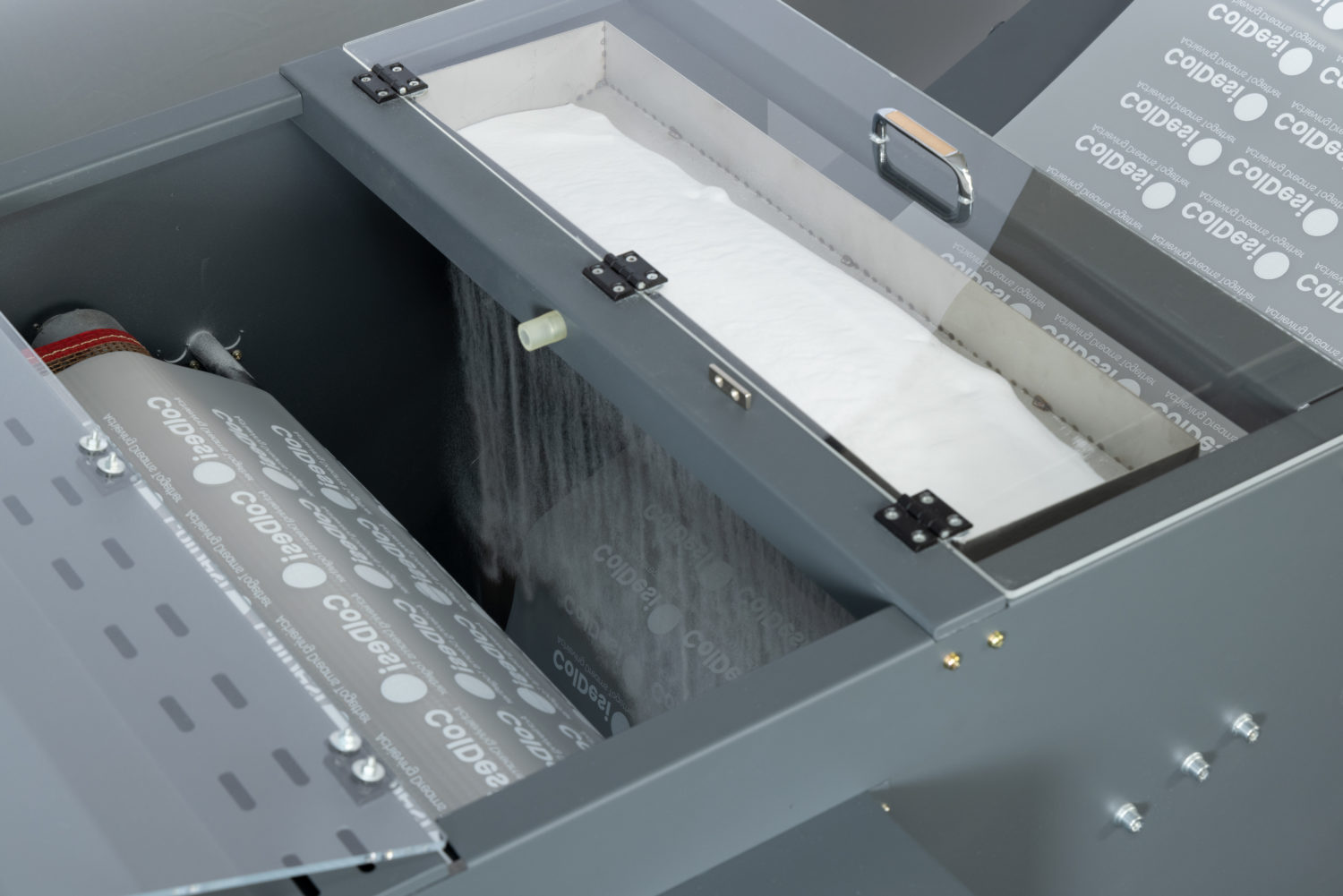
Powder dispersing system. Photo courtesy of Coldesi.
KODACOLOR Film
KODACOLOR Film comes double sided so the rollers on a roll fed inkjet printer can more easily grab the substrate. This enables lower maintenance and more up time.
Film Availability
- A3 and A3 plus sheets
- 30 centimeters x 100 meter long rolls
- 33 centimeters x 100 meter long rolls
- 60 centimeters x 100 meter long rolls
Compliance and Product Stewardship
According to Kodak’s website, the KODACOLOR inks are:
- Fully compliant with California Proposition 65 and CPSIA
- Oeko-Tex certification expected by Q1 2021
- ISO 14001-2015 certified-green
KODACOLOR Packaging
- 20L totes are available to Kodak partners who package the inks in containers as small as 128 ml for end-users
A Growing Market
Customization of fabrics for garments, accessories, upholstery and soft signage is growing, which represents a significant business opportunity for Kodak and their customers in the DTF, DTG and wide format printer industries. Smithers expects DTF printing to be a growth driver in The Future of Digitally Printed Textiles from 2021 – 2026. With high image quality, the ability to print dark polyesters, ease of processing and a low cost of entry, DTF printers are expected to grow particularly in Asia and the US.

